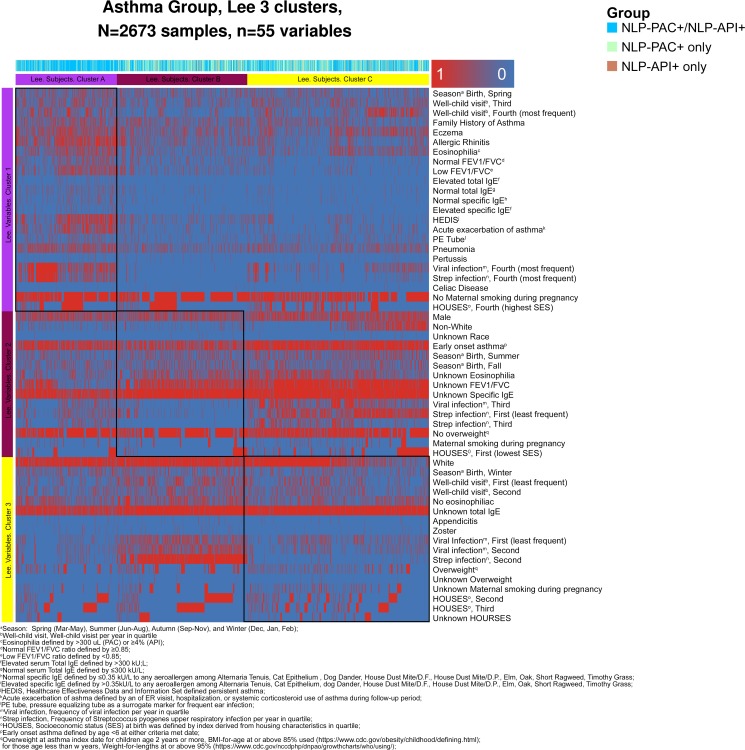Figure 2.
A heatmap of variable clusters (rows) and subject clusters (columns) among asthmatics (NLP-PAC+/NLP-API+, NLP-PAC+ only and NLP-API+ only group), which was identified by non-negative matrix factorisation with three optimal clusters (see Statistical analysis section for details). This heatmap consists of two cluster axis, while the three horizontal (rows) clusters present the sociodemographic and clinical variable clusters (eg, cluster 1 includes more children with spring birth, family history of asthma and history of eczema), the three vertical (columns) clusters present patient clusters (eg, 82% of cluster A represented group of NLP-PAC+/NLP-API+ (light blue)). Each rectangular red box in the map represents presence of each variable (eg, cluster 1 includes more children with history of allergic rhinitis compared with other two clusters), while each blue box represents absence of each variable. Subject cluster A (n=655) had the following characteristics: spring birth, more frequent family history of asthma, eczema, allergic rhinitis, eosinophilia, persistent asthma, asthma exacerbation, pneumonia, pertussis, tympanostomy tube, coeliac disease, no smoking during pregnancy, high SES defined by HOUSES and viral and streptococcal infection, compared with cluster B and C (see online supplementary table 4 above). HOUSES, HOUsing-based Index of SocioEconomic Status; NLP-API, NLP algorithms for Asthma Predictive Index; NLP-PAC, NLP algorithms for Predetermined Asthma Criteria; SES, socioeconomic status.

